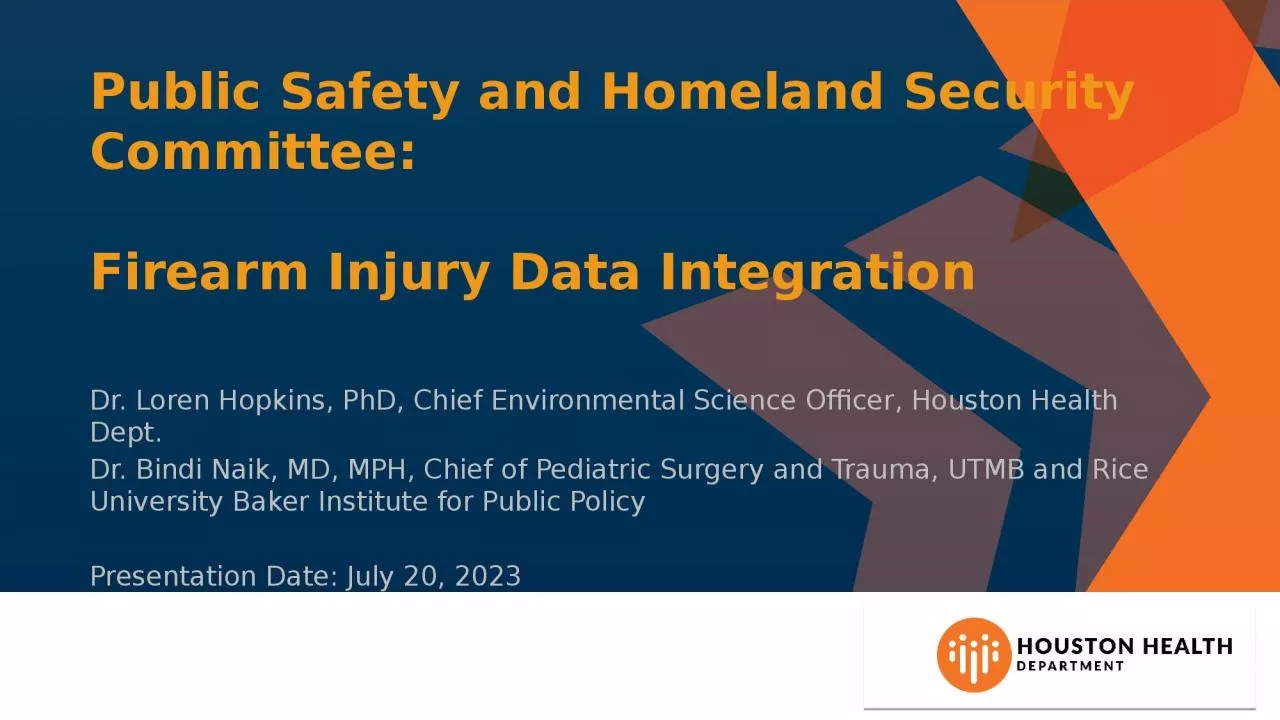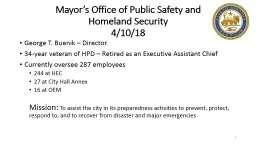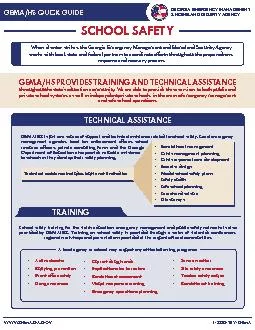PPT-Public Safety and Homeland Security Committee:
Author : abigail | Published Date : 2024-02-09
Firearm Injury Data Integration Dr Loren Hopkins PhD Chief Environmental Science Officer Houston Health Dept Dr Bindi Naik MD MPH Chief of Pediatric Surgery and
Presentation Embed Code
Download Presentation
Download Presentation The PPT/PDF document "Public Safety and Homeland Security Comm..." is the property of its rightful owner. Permission is granted to download and print the materials on this website for personal, non-commercial use only, and to display it on your personal computer provided you do not modify the materials and that you retain all copyright notices contained in the materials. By downloading content from our website, you accept the terms of this agreement.
Public Safety and Homeland Security Committee:: Transcript
Download Rules Of Document
"Public Safety and Homeland Security Committee:"The content belongs to its owner. You may download and print it for personal use, without modification, and keep all copyright notices. By downloading, you agree to these terms.
Related Documents












![READ [PDF] Homeland Security](https://thumbs.docslides.com/1017594/read-pdf-homeland-security.jpg)
![[PDF READ ONLINE] Terrorism, Intelligence and Homeland Security (What\'s New in Criminal](https://thumbs.docslides.com/1017686/pdf-read-online-terrorism-intelligence-and-homeland-security-what-s-new-in-criminal-justice.jpg)
